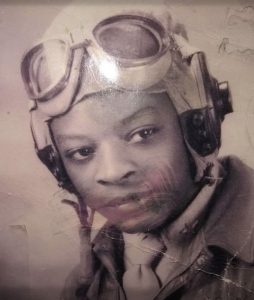 Elizabeth “Betty” Evert Greene
Elizabeth “Betty” Evert Greene
June 24, 1920 – April 10, 1997
Class: 43-W-5
Training Location: Avenger Field (Sweetwater, Tex.)
Assigned Bases: Camp Davis Army Air Field (N.C.) and Wright Field (Dayton, Ohio)
Planes flown: A-25
Elizabeth “Betty” Greene was born in 1920 in Seattle, Washington. From the beginning, Betty had character traits that helped her succeed. She knew what she wanted, and she wasn’t afraid to ask or work for it. When she wanted a horse, though her parents had barely scraped out of a house fire, they agreed to buy one if she proved she would care for it and be generous with it.
She wanted a college education, so she rode an early ferry and then walked five miles to the University of Washington (UW) to get it. When opportunities came to train for a pilot’s license in 1940 and later to enroll in WASP boot camp in Texas (1943), Betty unflinchingly grabbed the opportunity. Her class at UW was the last one to admit women for certification. Had she waited, someone else may have claimed all her records.
As a WASP, Betty flew high over North Carolina while servicemen below her practiced their radar skills or (more frighteningly) their artillery aim. Her calmness at the controls earned her a transfer to Wright Field in Dayton, where she helped experiment with high-altitude technology that gave pilots an advantage in flying above their opponents. To understand the magnitude of Betty’s achievements, we need to remember the twin challenges she faced. The first was that her job was hazardous. Bush flying in the middle of the 20th century was very different to the automated and computerized aviation we are familiar with today. Betty flew single-engine aircraft without a co-pilot, navigator or autopilot and, without GPS, found her landing site by careful navigation and tracing the roads and rivers below. Radio communications were unreliable. She took off and landed on dirt or grass strips that were short, uneven and sometimes occupied by people or grazing animals. The absence of reliable weather forecasts meant that flights often had a strong element of uncertainty. Bush flying demanded constant attention to the plane, the weather and the ground. It was heroic, and still is. Although Betty had many incidents where she believed God had miraculously delivered her, she knew many pilots who were killed. She faced the daily risks with courage, confidence and faith.
After publishing an article about her love of flying and of missionary work, Betty received a letter gauging her interest in joining three men planning to form the Christian Airmen’s Fellowship (later MAF) after the war. When WASP disbanded in 1944, she immediately agreed to move to Los Angeles and open the first office herself. A year later, she would pilot the inaugural flight of the organization to Mexico, despite the fact that she was no Christian airman. For almost thirty years, she ferried missionaries’ children, medical supplies, patients, and government dignitaries, all with the same tranquility she’d flown during those target practices.
Every mission she flew was a first. No woman—often no human being—had ever piloted a plane into the deeper territories of Mexico (1945), Peru, Nigeria (1951), Sudan (1956), and Irian Jaya (1960) (present-day Indonesia). To the chagrin of at least one American military general, the Peruvian Air Force decorated her for her achievement in flying over the Andes (December 19, 1946), which helped open supply and medical care routes to villages deep in the jungles.
Betty worked hard and took advantage of opportunities to excel and move forward in her field. Yet surely, she was not the only little girl of the 1920s who had dreamed of flying. This was, after all, the era of Charles Lindbergh (1902–1974). Everyone had flying mania, including girls. Few of them managed to fulfill those dreams.
Betty was fortunate to have benefactors who had the power she needed. Her parents educated her alongside her brothers and encouraged her interest in flying. They didn’t expect her to be safer, more traditional, or less herself because she was a girl. Though her reflections imply her parents might have preferred her to complete the nursing course she began, to marry, and eventually settle safely close to home, they recognized her passions and gifts and gave unreserved support to her choices.
She was inducted into the WAI Pioneer Hall of Fame in 2017. Watch her induction video here.
Sources:
Texas Women’s University in Denton, Texas, WASP Collection
CBE International
Wikipedia
CanonJJohn.com





